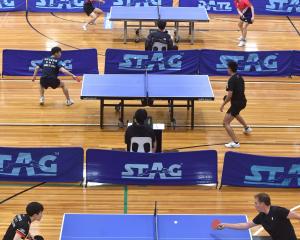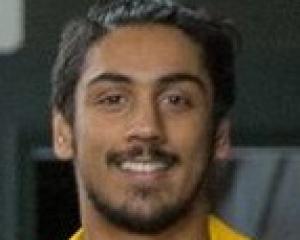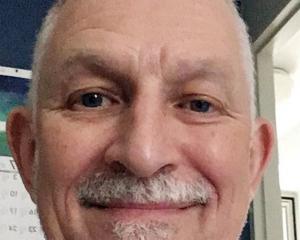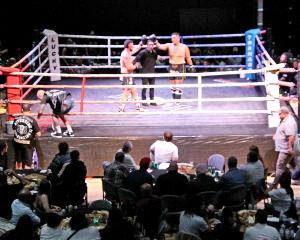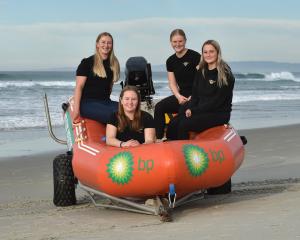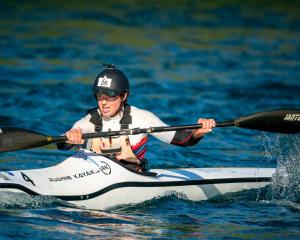Fighter, coach, medic, peacekeeper, authoritarian and mentor - they are all roles with which Matt Toa is familiar.
However, it is his position as Hammerhead Productions promoter that is his toughest.
Dunedin's first MMA show was held in 1997, and Toa (34) promoted his first in 2007. On May 23, the organisation's 15th show will be held.
Toa said while a minority of people attached negative stereotypes to MMA, the majority accepted it as a legitimate sport.
This was mainly due to the prominence of the Ultimate Fighting Championship (UFC) and the success New Zealanders were having globally.
One of those fighters is Ev Ting, who won a Supremacy Fighting Championship featherweight title in Dunedin in 2012 and is now one fight away from a One Championship title shot in Asia.
The One Championship is fast becoming the second-biggest promotion in the world, and Toa hopes Ting's success proves his shows can be a ''stepping stone to bigger things''.
He said Dunedin's early shows were more about ''older crowds and martial artists trying to see whose club was more dominant'', and now it was more a ''younger market of both men and women, with clubs working together to grow the sport nationally''.
Toa said proof of this was the 2013 formation of Undisputed NZ, when three of the country's biggest promotions began working together to find undisputed champions.
Last year, Auckland middleweight Arthur Lasike became the first.
Toa said the cost of putting on a Hammerhead show was about $60,000, sometimes higher.
Costs involved hiring lighting and sound equipment, paying for medics, security, a doctor, officials, catering, flights and accommodation, professional fight purses, a television crew, editing and hiring a recording studio.
With crowds of 800 to 900 people, including about 30 corporate tables, the show's success depended on a strong attendance.
Toa said this was never an issue, because Dunedin fans were among some of the ''most passionate and knowledgeable'' in the country.
''Sometimes we lose money and sometimes we gain, but as long as we sell out shows, more often than not we at least break even,'' Toa said.
He said having impartial judges was ''very important'' and his biggest hurdle was finding a good balance of match-ups, including some kickboxing fights.
''Fighters often get injured in preparation, so last-minute replacements are frustrating.''
Toa said the establishment of the New Zealand Mixed Martial Arts Federation in 2013 had helped regulate the industry.
He conceded head knocks, in the early days, were probably easy to overlook, but that was no longer the case.
His club took concussions ''very seriously'' and a fighter could be stood down from contact training for between four and eight weeks.
The use of a cage was also for safety reasons. Otherwise, fighters would be falling through ropes, Toa said.
Toa first fought in 2003 and last fought in April last year.
He has been the head coach at Team Hammerhead since it was founded by him, Howie Booth, Johnny Gui, Apii Taia and the creative brain of Dave Burke in 2009.
Olympic Gym owner Garry Chalklin came on board soon after.
Before that, Toa, Booth, Gui and Taia spent many years splitting their time training at associate John King's basement in Mornington and Booth's farm shed in Sawyers Bay.
Gui lives in Brazil, but is in regular contact, Taia still competes, Booth is still involved and also referees and judges, and Burke is an Auckland-based artist who designs the Team Hammerhead T-shirts and logo.
Burke also designed this year's 2015 Spirit of Anzac commemorative coins and the New Zealand Warriors rugby league jerseys.
The mangopare is on the Anzac coin and is the Maori name for hammerhead.
Toa said it symbolised determination and strength, the hammerhead fighting till the end.
''Even when its last breath has gone, its meat still quivers.''
The team is based with the Olympic boxing club at Mosgiel's Olympic Fight Centre.
Toa said the two clubs had 60 to 80 members combined, and Toa has 19 fighters going through eight-week camps for various shows.
He said MMA had changed his life for the better. He has not ruled out competing again but, for now, is focused on sharing his knowledge while living a ''dream'': being a fulltime coach at a facility dedicated to combat sports.
The MMA code
Three key beliefs
1) It is the ultimate test of mind, body and soul.
2) It is an honest sport, and once the cage door shuts, there is nowhere to hide.
3) It teaches dedication, discipline, sacrifice, pushing personal boundaries and self-improvement.

